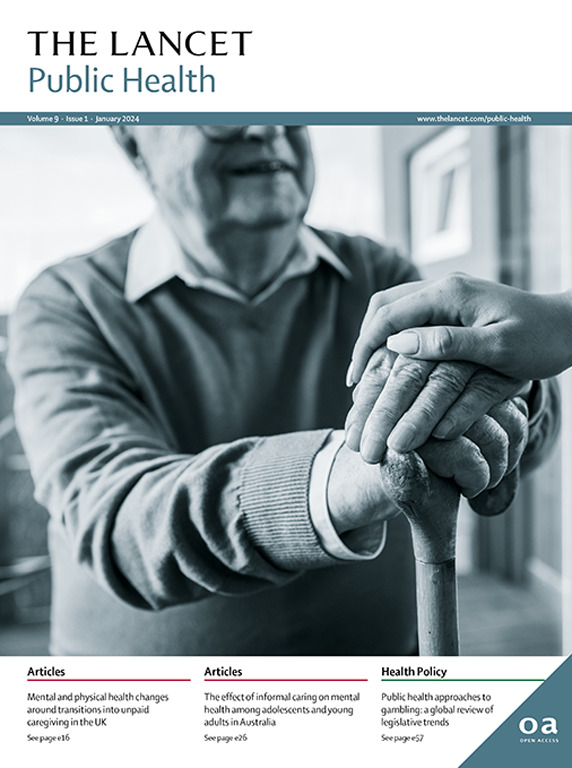Homeless shelter contacts and suicide risk: a critical window for intervention
IF 25.2
1区 医学
Q1 PUBLIC, ENVIRONMENTAL & OCCUPATIONAL HEALTH
引用次数: 0
Abstract
Homelessness has long been associated with an elevated risk of suicide and self-harm, but previous studies have largely been restricted to selected patient groups, such as those presenting to hospital following self-harm. A new nationwide, population-based study by Sandra F Nilsson and colleagues1 contributes substantially to the existing body of knowledge on the association between homelessness and suicidal behaviour. Applying a strong registry-based, cohort study design, the authors show markedly elevated risks of both suicide and self-harm among people experiencing homelessness in Denmark compared with the general population. The authors find that 1·3% of male individuals experiencing homelessness and 0·9% of female individuals experiencing homelessness died by suicide within 10 years, with suicide mortality rates 8 times higher for males and 15 times higher for females than in the general population. Nearly 10% of people experiencing homelessness had self-harmed, reflecting a 6-fold increased risk over the same period compared with the general population. In addition, the study shows that the risk of suicide and self-harm was especially high shortly after shelter contact and among individuals with frequent shelter use.无家可归者收容所接触和自杀风险:干预的关键窗口
长期以来,人们一直将无家可归与自杀和自残的高风险联系在一起,但之前的研究在很大程度上仅限于选定的患者群体,比如那些自残后去医院的患者。桑德拉·F·尼尔森(Sandra F Nilsson)及其同事进行了一项新的全国性的、以人口为基础的研究,对无家可归与自杀行为之间关系的现有知识体系做出了重大贡献。采用强有力的基于登记的队列研究设计,作者表明,与一般人群相比,丹麦无家可归者自杀和自残的风险明显增加。作者发现,在10年内,1.3%的无家可归男性和0.9%的无家可归女性死于自杀,男性的自杀死亡率是一般人群的8倍,女性的自杀死亡率是一般人群的15倍。近10%的无家可归者曾自残,与普通人群相比,这一风险增加了6倍。此外,研究表明,在接触避难所后不久以及经常使用避难所的个人中,自杀和自残的风险尤其高。
本文章由计算机程序翻译,如有差异,请以英文原文为准。
求助全文
约1分钟内获得全文
求助全文
来源期刊

Lancet Public Health
Medicine-Public Health, Environmental and Occupational Health
CiteScore
55.60
自引率
0.80%
发文量
305
审稿时长
8 weeks
期刊介绍:
The Lancet Public Health is committed to tackling the most pressing issues across all aspects of public health. We have a strong commitment to using science to improve health equity and social justice. In line with the values and vision of The Lancet, we take a broad and inclusive approach to public health and are interested in interdisciplinary research.
We publish a range of content types that can advance public health policies and outcomes. These include Articles, Review, Comment, and Correspondence. Learn more about the types of papers we publish.
 求助内容:
求助内容: 应助结果提醒方式:
应助结果提醒方式:


